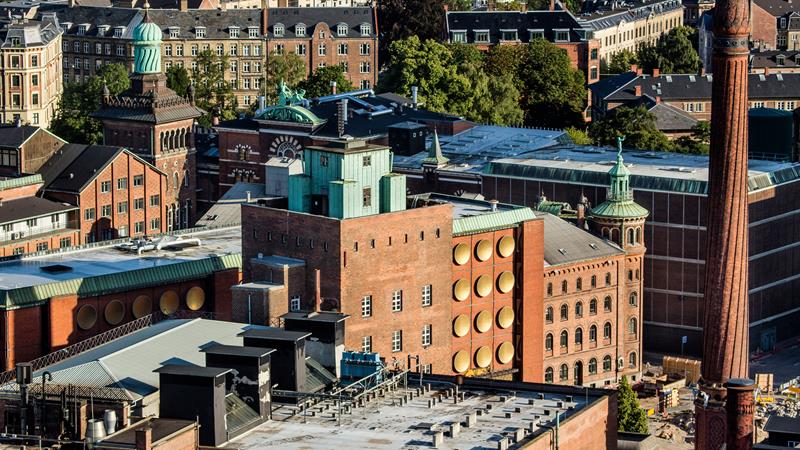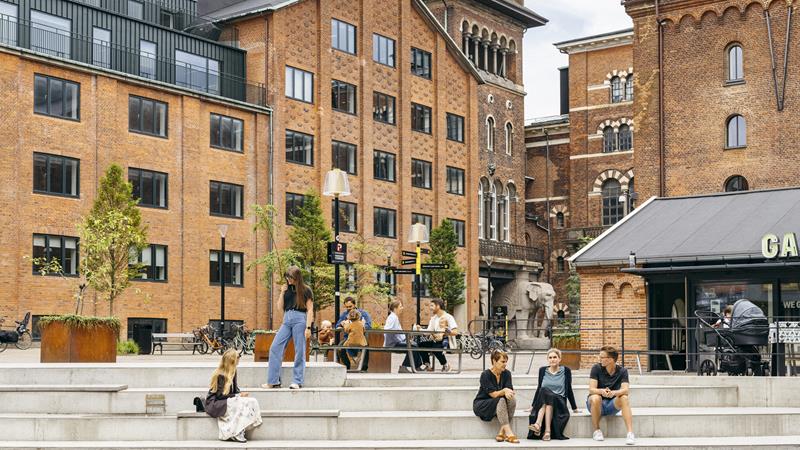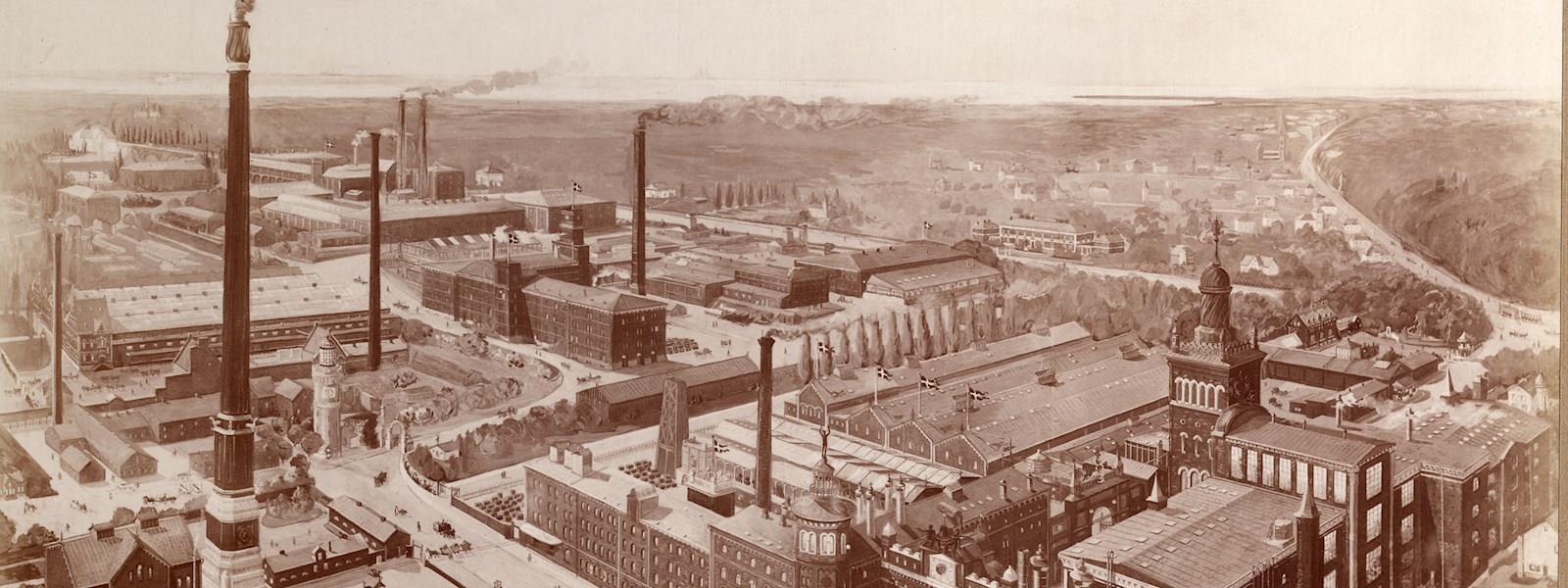The history of Carlsberg and the old brewery site
Carlsberg was founded in 1847 by visionary brewer J.C. Jacobsen, who thus laid the cornerstone for a modern Danish brewery company. Jacob Christian (J.C.) Jacobsen (1811–1887) was trained in his father Chresten Jacobsen's (Nørkjær) brewery in Brolæggerstræde, and following his father's death, he took over responsibility for the brewery.
To get more space and not least clean brewing water, he moved the brewery to the Valby Bakke hill in 1847. There was plenty of water here because it ran out of the bluff after the construction of the railway to Roskilde. Thus, J.C. Jacobsen founded an industrial brewery named after the brewery's location on a "mountain" ("bjerg"/"berg") and his only son, Carl: Carlsberg.
Carl Jacobsen (1842–1914) became a brewer like his father and grandfather, and in 1880, he built his own brewery next to the one he had leased from his father.
In the period 1881–1886, father and son had disagreements about, among other things, production methods, which led to Carl Jacobsen opening a new brewery under the name Ny Carlsberg ("New Carlsberg") in 1882. At the same time, J.C. Jacobsen changed the name of his brewery to Gamle Carlsberg ("Old Carlsberg").
Over the years, J.C. Jacobsen and Carl Jacobsen contributed significantly to the architecture and cultural life in Copenhagen, including the construction of The Little Mermaid, the Botanical Gardens and the Ny Carlsberg Glyptotek, just as many of the great Danish artists and scientists of the time frequented Carlsberg.
In 1906, J.C. Jacobsen and Carl Jacobsen's two breweries merged and were renamed Carlsberg Bryggerierne ("The Carlsberg Breweries"). In 1970, Carlsberg merged with the biggest competitor, Tuborg, and at the end of 2008, Carlsberg Breweries moved all their beer production to Fredericia Brewery.
After 160 years as a closed industrial site, Carlsberg opened the area to the public, and since then, Danes and tourists from all over the world have flocked to study and take part in history, architecture – and not least enjoy the green areas.


